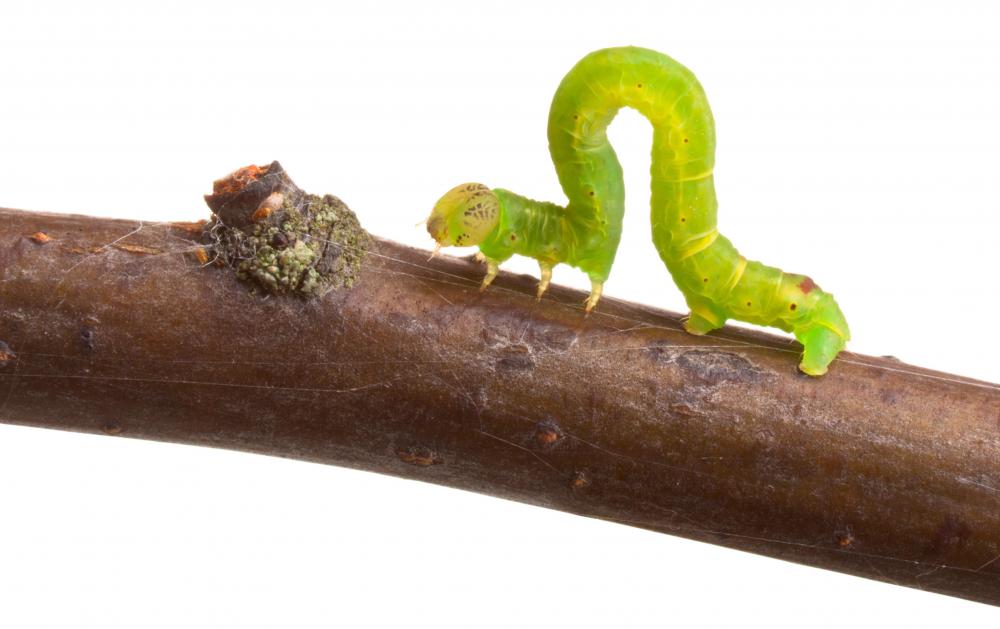At WiseGEEK, we're committed to delivering accurate, trustworthy information. Our expert-authored content is rigorously fact-checked and sourced from credible authorities. Discover how we uphold the highest standards in providing you with reliable knowledge.
What Problems Affect Tomato Leaves?
Some problems that affect tomato leaves include viruses or diseases, pest infestations, soil or water deficiencies, and general weather conditions. Since the health of tomato leaves are typically an indication of how well the tomato plant is doing overall, it is important to understand what issues can arise during the growing season. Many tomato leaf problems can be remedied quickly and the harvest remain unharmed.
Tomato viruses and diseases are the main problems most gardeners face. When growing tomatoes, choose a disease resistant variety to prevent most tomato fungus issues from developing. There is a standard coding system for seeds that indicate which plant diseases the variety is resistant to.

Fusarium wilt (F) is a fungus that causes the tomato leaves to turn yellow and wilt. Cucumber mosaic virus also turns tomato leaves yellow along with the rest of the plant. The leaves may also appear spotted or mottled in severe cases. Early blight (A) turns tomato leaves brown with large spots that cause the leaves to die.
Pest infestations are another problem that affect tomato leaves. The most common tomato pests are tomato horn worms, flea beetles, psyllids, beet leaf hoppers, and aphids. Horn worms are large green caterpillars that eat the leaves and stems. Flea beetles are small, black insects that eat holes through the leaves which leaves the plant open for early blight.

Psyllids are another type of insect that cause yellowing of the leaves. This is caused by the saliva secreted when the psyllids feed on the leaves. Beet leaf hoppers carry a virus called the curly top virus that is transmitted when they feed on the leaves. Tomato leaves affected by curly top virus will shrivel and turn a dark purple. Aphids feed on the leaves and secrete a substance that causes the remaining leaves to turn a yellowish brown.

Soil and water deficiencies may affect leaves as much as pests or diseases. Phosphorus deficiencies in the soil cause the entire plant to shrivel and growth is often stunted. Inadequate drainage due to soil compaction and lack of air circulation may also cause the leaves, roots, and fruit to rot.
Over watering may cause the leaves to turn yellow and is often mistaken for Fusarium wilt. Under watering may cause the leaves to appear dry and severe water restriction may turn the leaves brown. Weather conditions also have an affect on the plant's appearance. Sun scald is, as the name suggests, a burning of the leaves and fruit due to over exposure to the sun.
AS FEATURED ON:
AS FEATURED ON:














Discussion Comments
The last paragraph of this article could be directed toward me. I always worry that my tomato plants are not getting enough water. I have noticed the leaves of the plants turning yellow. I thought this was caused by too little water. I guess I could be over watering them after all.
@Laotionne -Farmers have been using chemicals for years to protect their crops from insects and diseases. I have no problem with this, but according to some of the recent reports, these chemicals may be causing more health issues for people who eat the foods produced by the farmers than we originally thought.
Some years ago, I decided not to use any thing in my gardens that was not natural and harmless to me and my family. You are right about aphids being a big problem for tomato plants.
However, I learned that the mistake many people make is they spray their gardens and yards with chemicals that kill bugs that can actually be helpful to them. For example, ladybugs eat aphids and keep them from destroying your garden, so don't make the mistake of spraying the ladybugs. This could lead to an aphid infestation.
@Laotionne - You want to spray the tomato plant and the leaves early, before the plants has any tomatoes on it. This way you will not be spraying the fruit directly. There are many types of insecticides and fungicides that claim to be safe to use on vegetables and fruits, but I would not want to make a habit of spraying them directly on the produce that I am planning to eat if this can be avoided.
Aphids can be so difficult to get rid of, and there are so many of them. Is it safe to spray tomatoes for aphids, or does this contaminate the tomatoes?
Post your comments